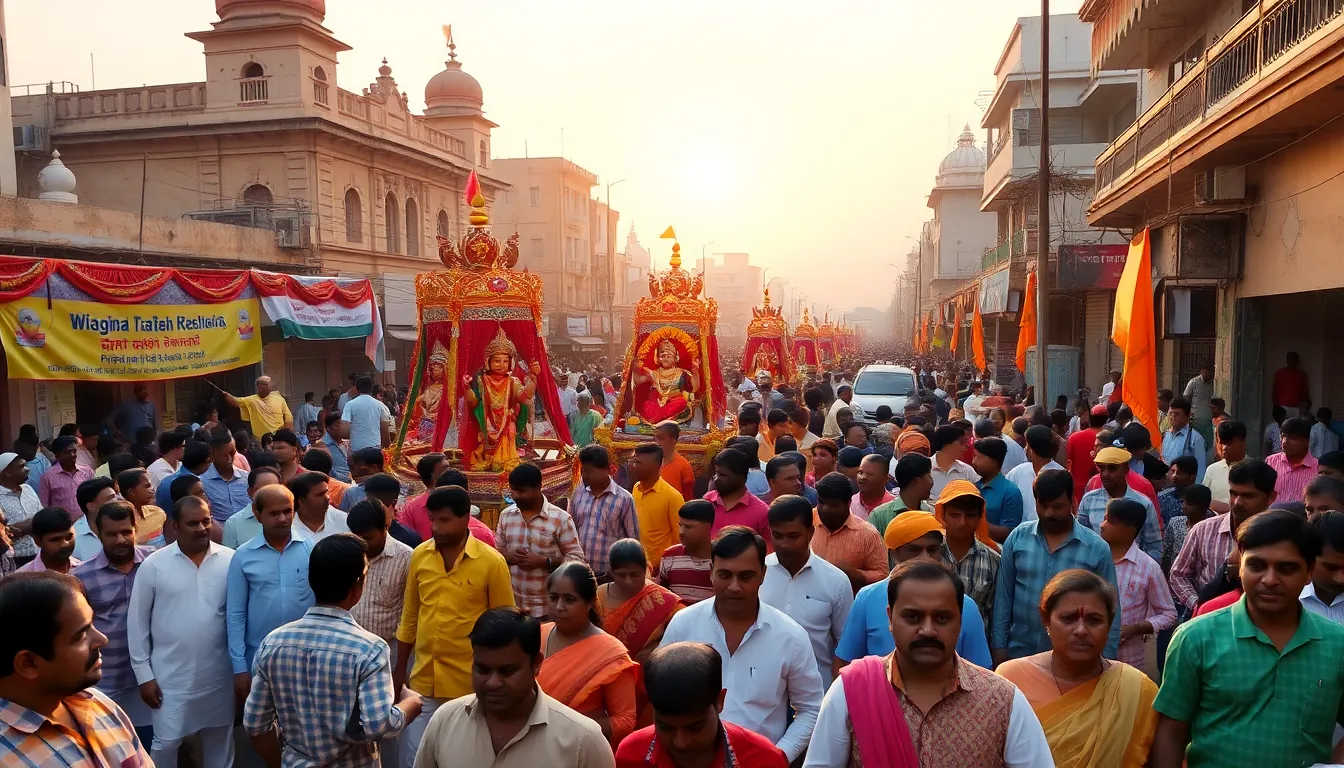Ahmedabad, Gujarat’s largest city, is preparing for its 148th Jagannath Rathyatra on Friday. This grand event is one of the most awaited spiritual and cultural celebrations in the state. It is more than just a religious procession; it is a vibrant symbol of Gujarat’s rich cultural heritage and social unity.
The Rathyatra in Ahmedabad is second in scale only to the one in Puri, Odisha. Its origins trace back to the 19th century, during the Vaishnavite revival. Sects like Pushtimarg and Swaminarayan Sampraday were already active in the city, and the Jagannath tradition resonated with the urban dwellers.
The idea to bring the Rathyatra to Ahmedabad came from Mahant Narsinhdasji. Inspired by Puri’s grand celebration during a pilgrimage, he wanted to offer the same experience to the people in Ahmedabad. The Jagannath Temple in Jamalpur, nearly 450 years old, became the focal point of this event. His vision was to make the divine accessible to those who could not travel to Puri, promoting both spiritual generosity and cultural inclusion.
In its early years, the Rathyatra featured small chariots and modest crowds. However, by the early 20th century, it had grown significantly. Historical records show that the British authorities sometimes intervened, citing concerns about public order during the celebrations.
The procession covers a distance of 16 kilometres. It starts early in the morning from the Jagannath Temple and winds through the old city. Key areas include Kalupur, Prem Darwaja, and Shahpur, before returning to the temple by evening. The idols of Lord Jagannath, Balabhadra, and Subhadra are transported in beautifully decorated chariots, pulled by hundreds of devoted participants.
A significant aspect of the Rathyatra is the Pahind Vidhi. This ritual involves the Chief Minister of Gujarat sweeping the path, symbolising humility and public service. The event is deeply devotional, but it also showcases civic cooperation, involving the police, municipal authorities, volunteers, and religious leaders.
Last year, over one million devotees attended the Rathyatra, and a similar turnout is expected this year. “For us, Rathyatra isn’t just a festival—it’s an emotion,” shared Meena Patel, a resident of Jamalpur. The anticipation and joy surrounding the event are palpable in the community.
This year’s Rathyatra also integrates advanced technology. There will be AI-based crowd monitoring, 3D mapping of the route, and extensive surveillance with thousands of CCTV cameras. Over 23,000 security personnel will ensure safety, and any dangerous buildings along the route will be sealed for public safety.
Beyond its spiritual significance, the Rathyatra fosters social cohesion. Activities like peace committee meetings and community-led events are part of the pre-yatra preparations, promoting unity among diverse groups.
The Rathyatra showcases not just devotion but also diversity and community spirit. As Ahmedabad gears up for this historic event, the city stands united in celebration, reflecting its rich heritage and vibrant culture. The 148th Jagannath Rathyatra promises to be a remarkable blend of tradition and modernity, drawing locals and tourists alike to experience this unique cultural spectacle.


Leave a Reply